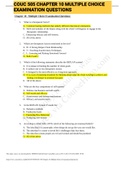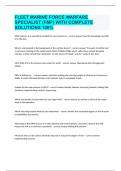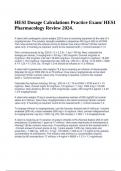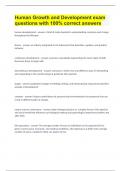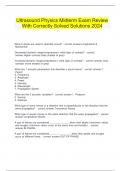Exam (elaborations)
BIO 182 ASU Final Exam – All Verified Questions & Answers (100% Accurate)
- Course
- Institution
BIO 182 ASU Final Exam – All Verified Questions & Answers (100% Accurate) BIO 182 ASU Final Exam – All Verified Questions & Answers (100% Accurate) What is extinction? - ANSWER - The loss or death of a species What is mass extinction? - ANSWER - A decline in biodiversity greater than the...
[Show more]




